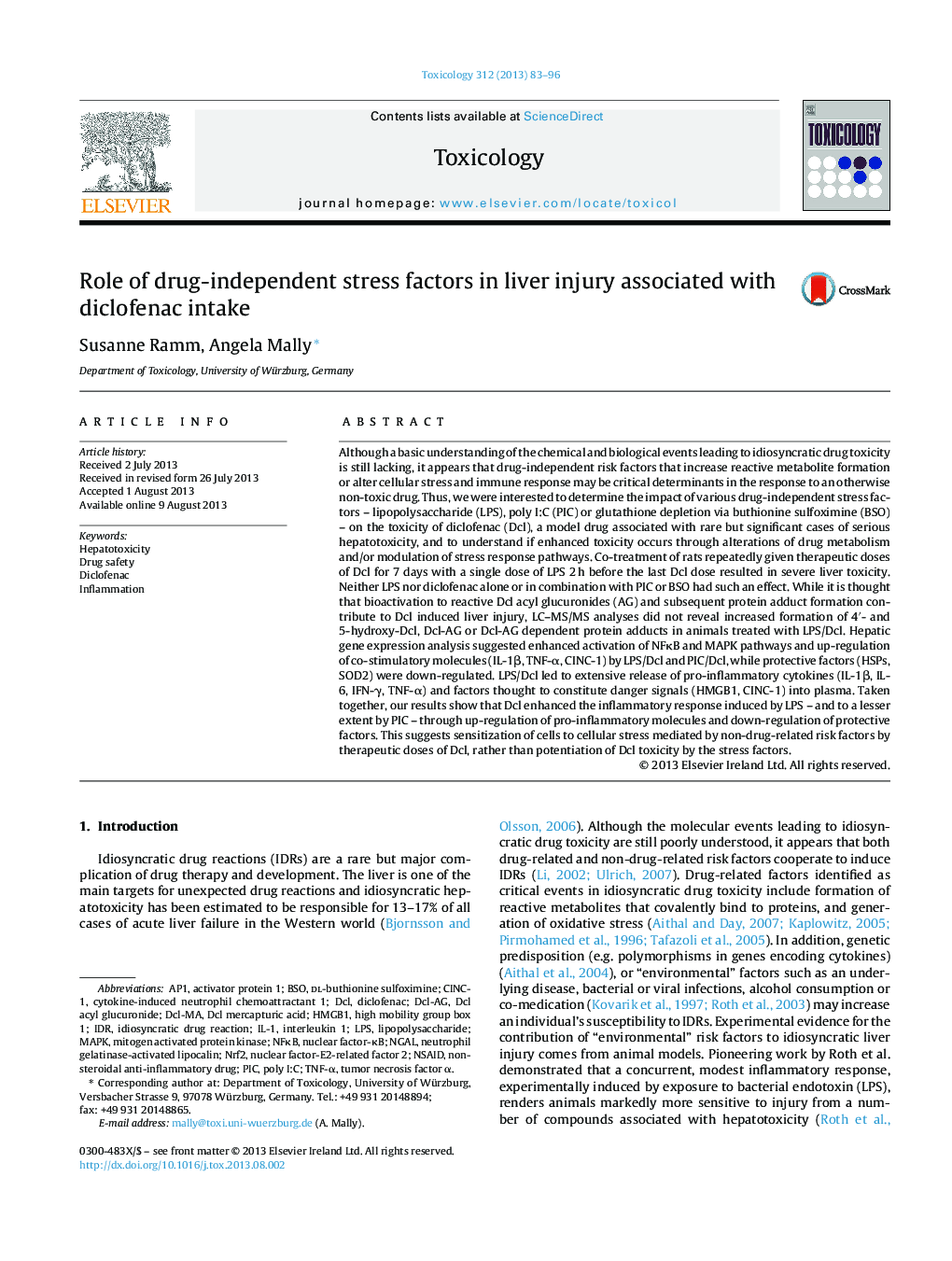| کد مقاله | کد نشریه | سال انتشار | مقاله انگلیسی | نسخه تمام متن |
|---|---|---|---|---|
| 2595578 | 1562344 | 2013 | 14 صفحه PDF | دانلود رایگان |

Although a basic understanding of the chemical and biological events leading to idiosyncratic drug toxicity is still lacking, it appears that drug-independent risk factors that increase reactive metabolite formation or alter cellular stress and immune response may be critical determinants in the response to an otherwise non-toxic drug. Thus, we were interested to determine the impact of various drug-independent stress factors – lipopolysaccharide (LPS), poly I:C (PIC) or glutathione depletion via buthionine sulfoximine (BSO) – on the toxicity of diclofenac (Dcl), a model drug associated with rare but significant cases of serious hepatotoxicity, and to understand if enhanced toxicity occurs through alterations of drug metabolism and/or modulation of stress response pathways. Co-treatment of rats repeatedly given therapeutic doses of Dcl for 7 days with a single dose of LPS 2 h before the last Dcl dose resulted in severe liver toxicity. Neither LPS nor diclofenac alone or in combination with PIC or BSO had such an effect. While it is thought that bioactivation to reactive Dcl acyl glucuronides (AG) and subsequent protein adduct formation contribute to Dcl induced liver injury, LC–MS/MS analyses did not reveal increased formation of 4′- and 5-hydroxy-Dcl, Dcl-AG or Dcl-AG dependent protein adducts in animals treated with LPS/Dcl. Hepatic gene expression analysis suggested enhanced activation of NFκB and MAPK pathways and up-regulation of co-stimulatory molecules (IL-1β, TNF-α, CINC-1) by LPS/Dcl and PIC/Dcl, while protective factors (HSPs, SOD2) were down-regulated. LPS/Dcl led to extensive release of pro-inflammatory cytokines (IL-1β, IL-6, IFN-γ, TNF-α) and factors thought to constitute danger signals (HMGB1, CINC-1) into plasma. Taken together, our results show that Dcl enhanced the inflammatory response induced by LPS – and to a lesser extent by PIC – through up-regulation of pro-inflammatory molecules and down-regulation of protective factors. This suggests sensitization of cells to cellular stress mediated by non-drug-related risk factors by therapeutic doses of Dcl, rather than potentiation of Dcl toxicity by the stress factors.
Journal: Toxicology - Volume 312, 4 October 2013, Pages 83–96